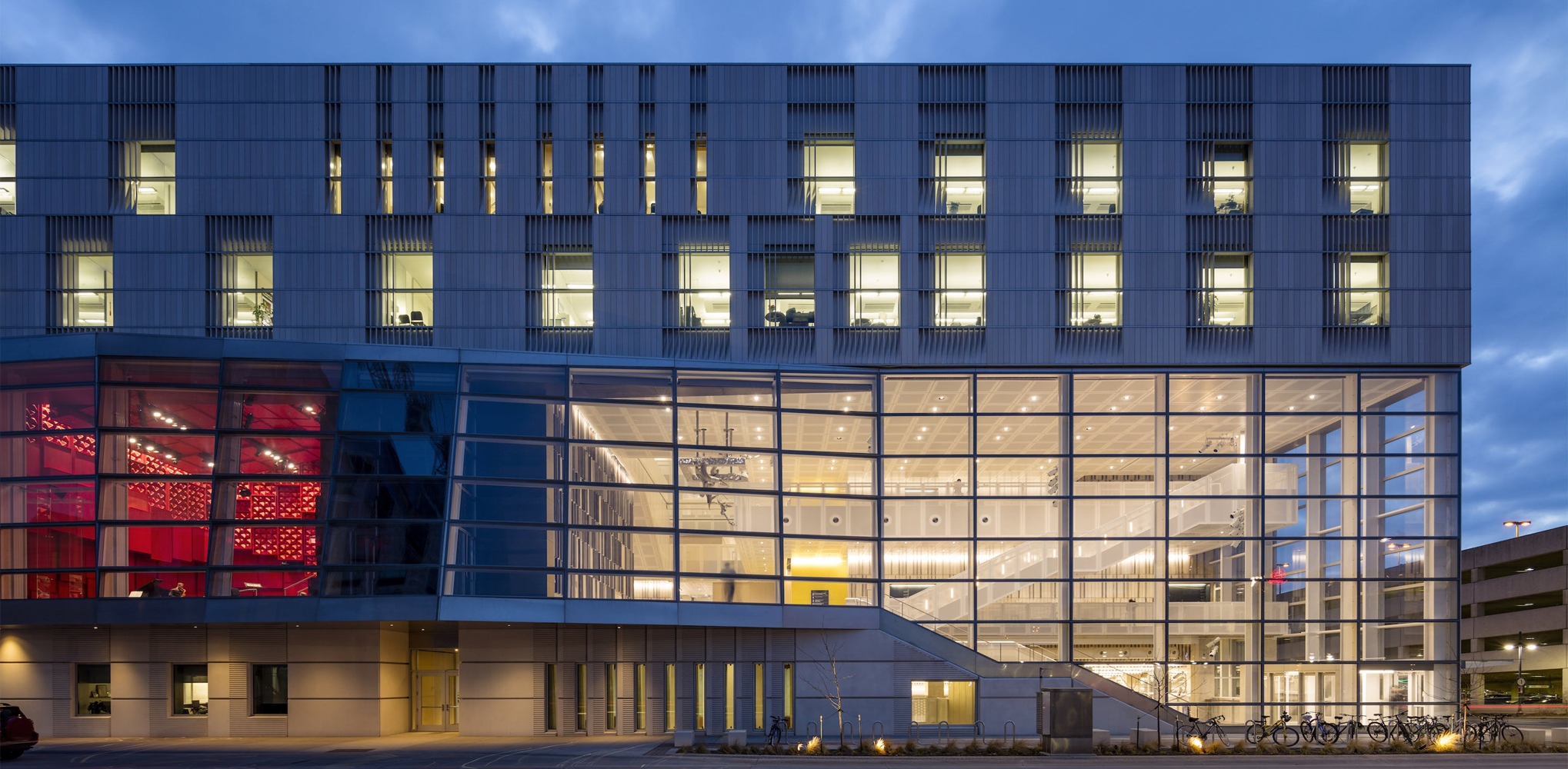Architects: Showcase your next project through Architizer and sign up for our inspirational newsletter.
Henry Ford, the father of assembly-line manufacturing, had a saying: “Any customer can have a car painted any color that he wants so long as it is black.”
Ford knew that the success of his company rested on the standardization of its marquee product, the Model T. This car was manufactured cheaply en masse because each unit was exactly the same. Naturally, they came in the only color that is a true neutral, the color that is really the absence of colors: Black. As with the original iPhone, nothing else would quite suit the product’s cultural meaning.
Black can make all kinds of statements, depending on the context. While it signified uniformity and pragmatism for Henry Ford, artists such as Johnny Cash have worn black as a symbol of rebellion. “It is the ultimate code switcher,” explains Stella Paul in the introduction to Black: Architecture in Monochrome, a gorgeous photo book recently published by Phaidon. “Asserting abject humility or the pretensions of power — sometimes concurrently — black, freighted with messages, is a brilliant communicator of values.”
Therefore, when wielding black, architects must be careful. Black may carry conflicting messages, but it is always signifying something, communicating one value or another. What follows are 8 highlights from Black that showcase architects using this hue in their materials to powerful, original effects.
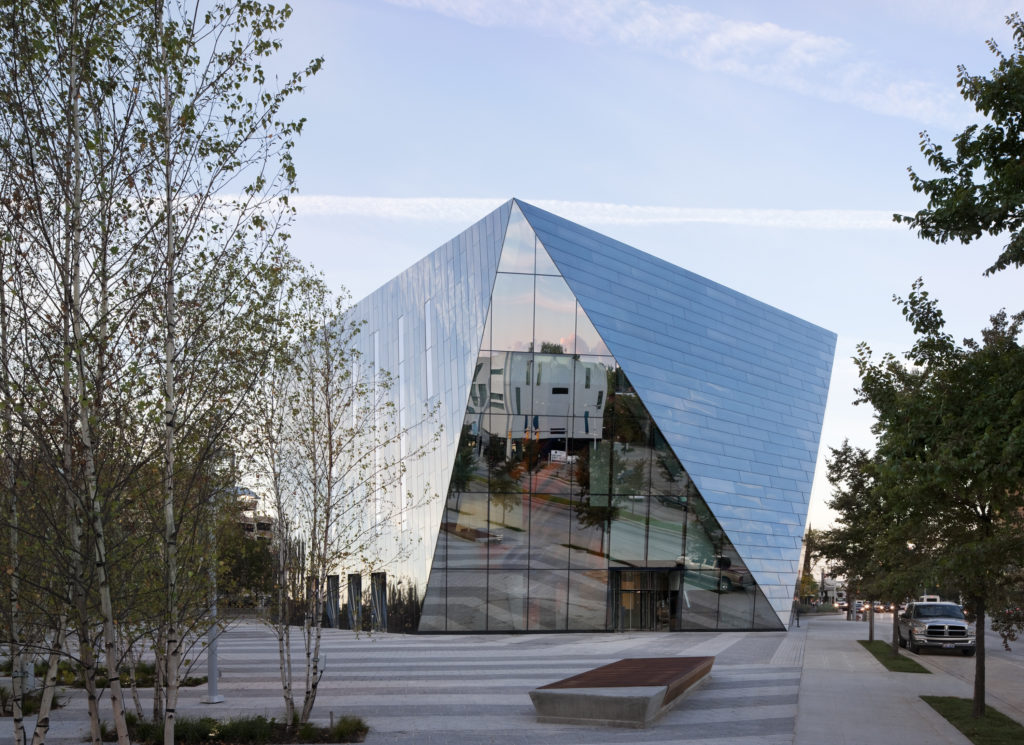
Image via ZDNet
1. Mirrored Panels
Museum of Contemporary Art Cleveland by Farshid Moussavi, Cleveland, Ohio, 2012
There is something startling, even confrontational, about encountering a mirror where you don’t expect it, such as on the exterior of a building. The reflective surface draws onlookers in as they hope to catch a glimpse of what’s inside, only to rebuff their penetrative gaze. The interior remains hidden, seemingly just out of reach.
Farshid Moussavi understands the power of mirrors. Her elegant Museum of Contemporary Art in Cleveland is clad in mirror-finish black steel panels to resemble a finely cut jewel. The museum has no permanent collection — its exhibitions are constantly rotating — so even locals don’t really know what lies inside the black box.
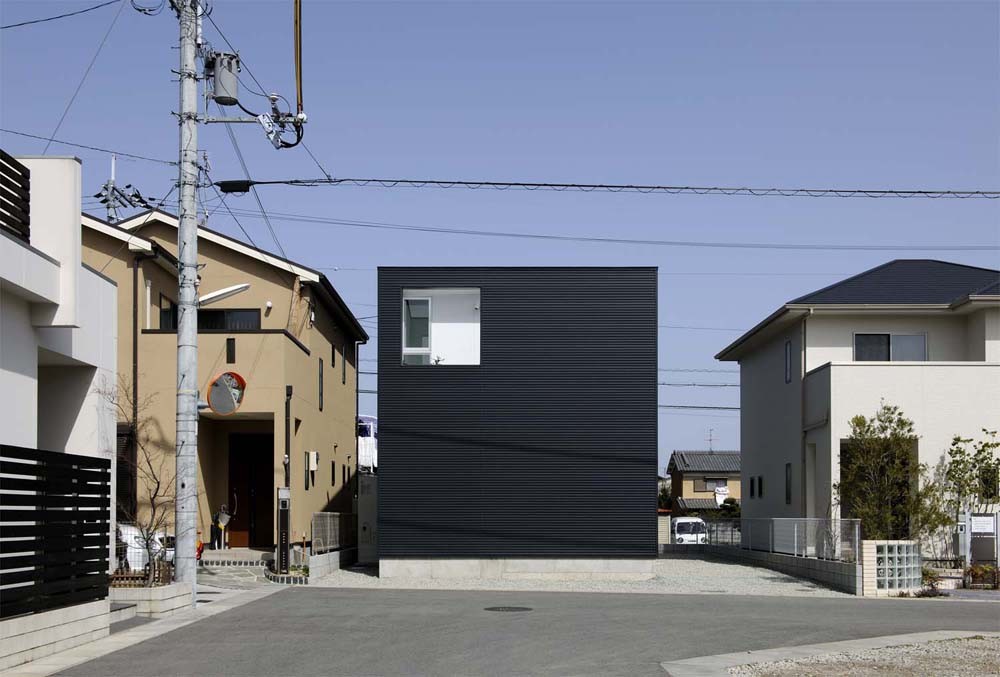

2. Corrugated Steel
House of Kashiba by Horibe Associates, Kashiba, Japan, 2009
The monoliths in 2001: A Space Odyssey are some of the most iconic black structures of the 20th century. In the film, these rectangular boxes appear to human beings at crucial points in their evolution, mysterious beacons of modernity drawing humanity forward.
For Stanley Kubrick, nothing signified modernity as succinctly as a plain black box. This is still true for architects today. Horibe Associates’ House of Kashiba is one of many structures in Black that resembles the monoliths of 2001. This one is distinguished by an offset white window that breaks up the façade and provides visual interest. The house is clad in corrugated steel, giving it an elegant matte finish that is both sleek and industrial.
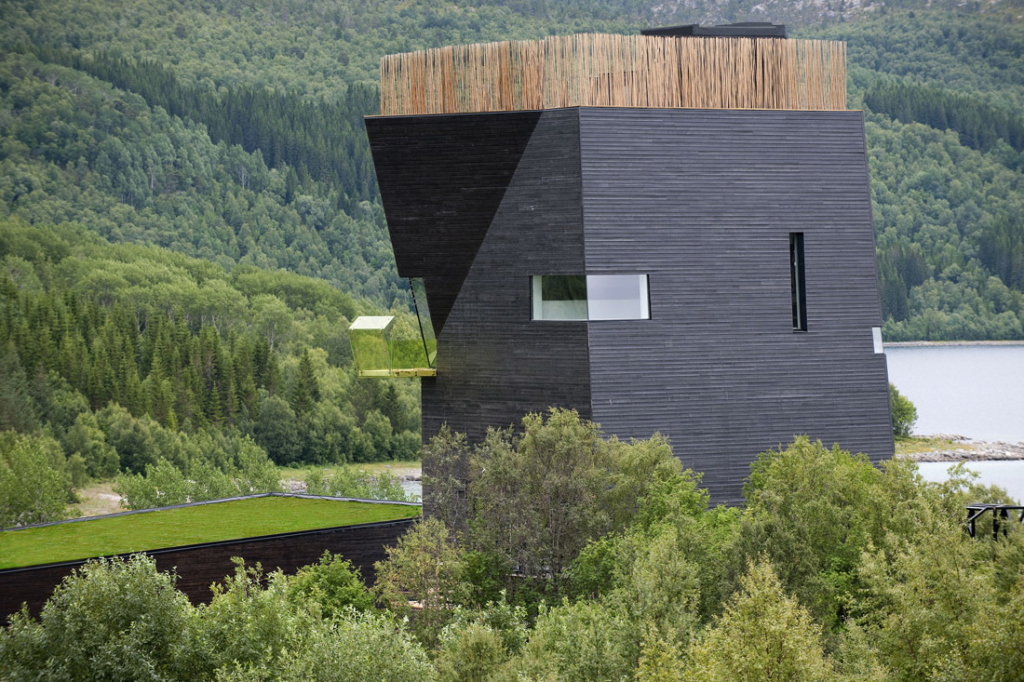
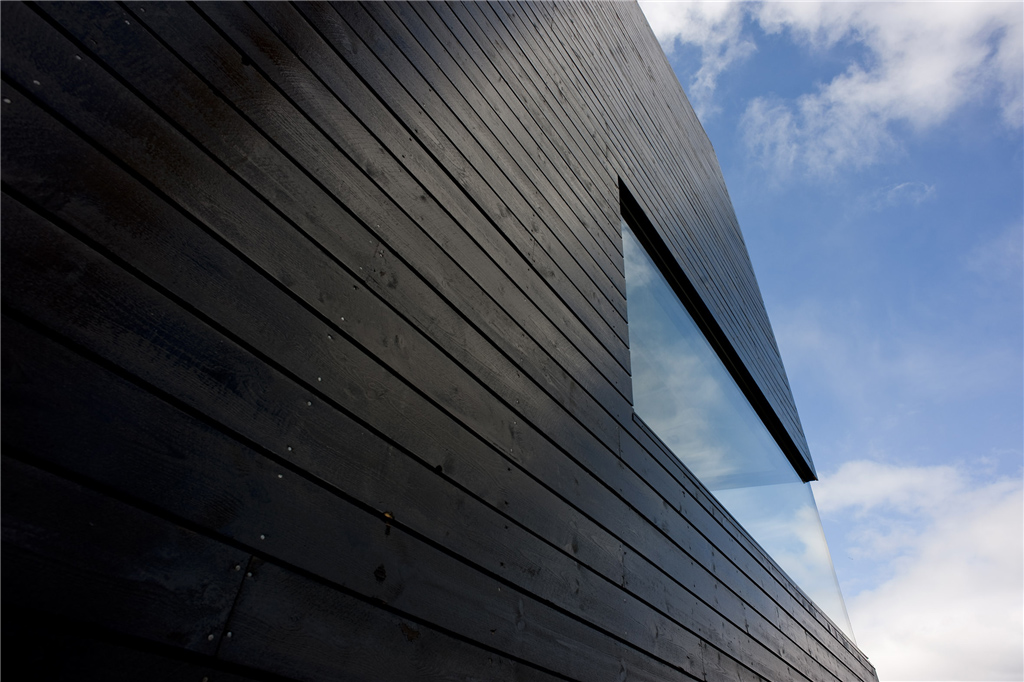
Images via ArchDaily
3. Tarred Timber
Knut Hamsun Center by Steven Holl Architects, Hamaroy, Norway, 2009
So far, we have discussed the color black and its relationship to uniformity and modernity. However, black has much more ancient associations as well. Most famously, it is the color of mourning. It was fitting, then, that Steven Holl Architects looked to black when they were asked to design a museum dedicated to the life and work of Knut Hamsun, an author who never shied away from the subject of death. It was Hamsun’s contention that fiction should describe the “whisper of blood, and the pleading of bone marrow.”
The Knut Hamsun Center is a one-of-a-kind building, with balconies and platforms emerging unexpectedly from the staid surface. The architects wanted these protrusions to have an expressionist dimension, explaining that one viewing platform was designed to look like a “girl with sleeves rolled up polishing yellow panes,” while another is meant to resemble an “empty violin case.” The black timber cladding is a nod to Norway’s famous medieval stave churches.
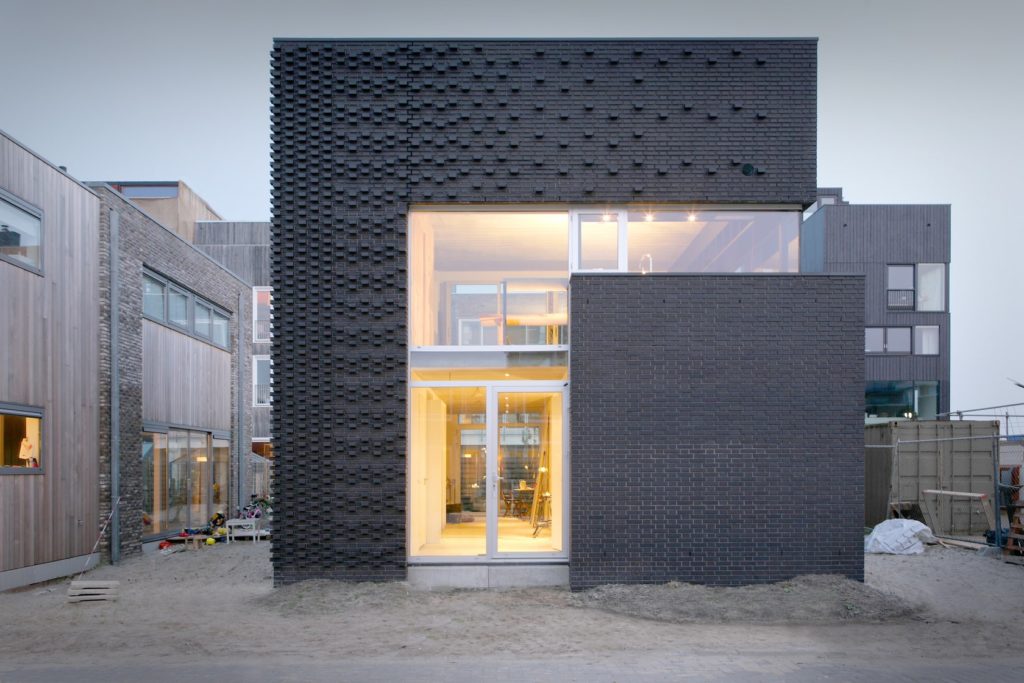
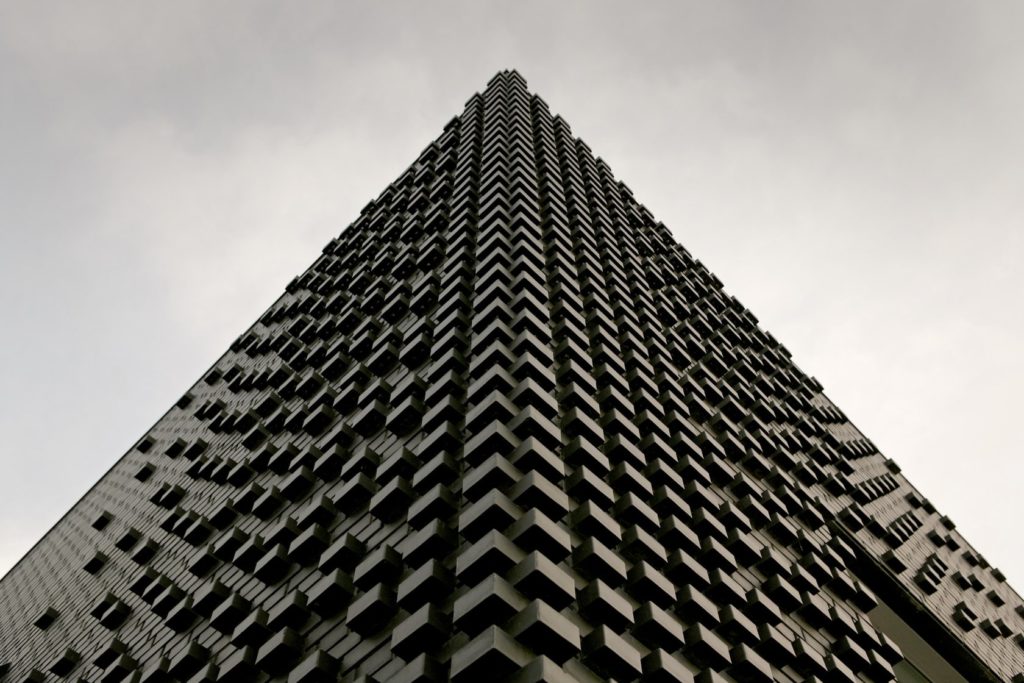
4. Textured Brick
House Like a Garden by MKA, Amsterdam, 2008
Because it is a neutral base, the color black can be a good starting point for architects who want to play with pattern and texture but don’t want their buildings to become too visually busy. MKA’s House Like a Garden is a good example. The building’s minimalist form is a perfect canvas for the intricate brickwork of its façade, which draws inspiration from the Amsterdam School, a modernist movement of the 30s that explored the possibilities of masonry. Eventually, climbing plants will cover this house in greenery.
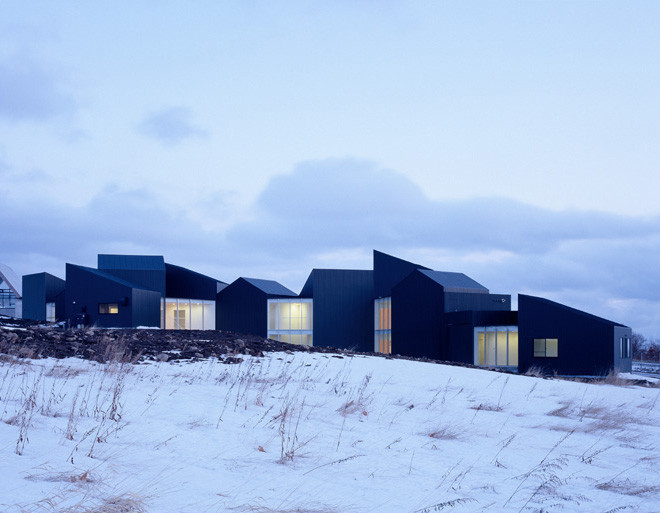
Image via Pinterest
6. Monolithic Metal
Residential Care Unit by Sou Fujimoto Architects, Date, Japan, 2003
Sou Fujimoto’s Residential Care Unit is located on a hillside that looks over the village of Date in Hokkaido, Japan. The facility, which houses developmentally disabled residents, is composed of cubic units whose pitched roofs respond to the gently changing elevations of its surroundings. The overall effect is one of simplicity and privacy. This is reflected in the interior spaces, which are numerous, varied and intimate.
The authors of Black note that “depending on the season, weather conditions or time of day, the black metal skin might appear warm and glowing with the light of the setting summer sun, stark and serious against the white snow of Hokkaido’s long winters, or nearly invisible as darkness falls.”
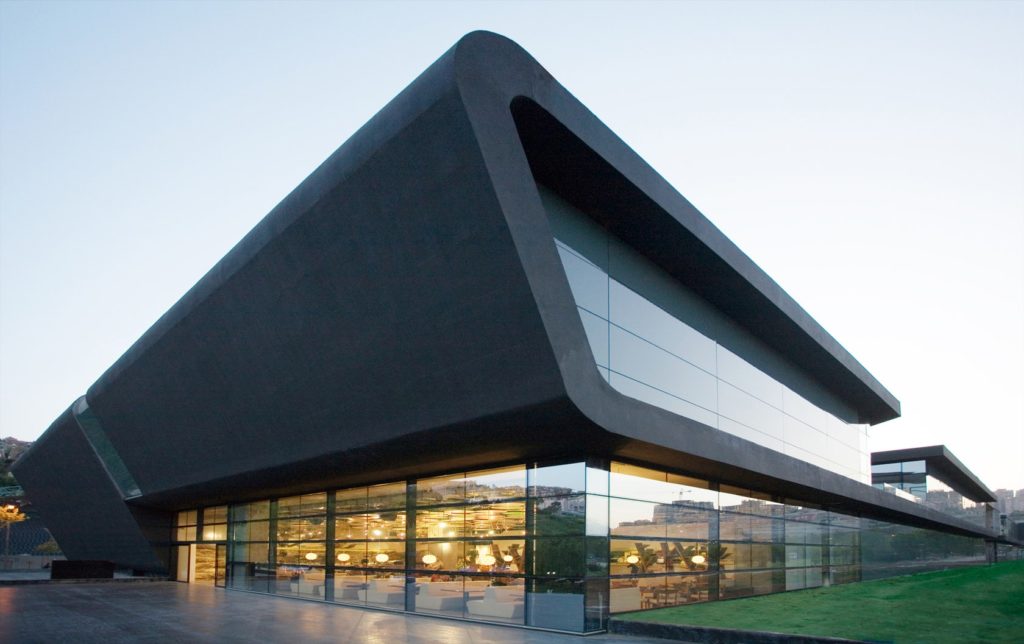
7. Folded Concrete
Prestige Mall by DDA, Istanbul, Turkey, 2014
For generations, architects have fallen in love with concrete due to its flexibility. This quality is certainly on display in DDA’s Prestige Mall, which is dominated by a single, sweeping curve. The heavy black concrete is offset by the long, glass curtain walls that dominate the building’s remaining surfaces. According to the architects, black was chosen because it represents “honor, prestige, fragility, the secrecy afforded by night, the feeling of being lost, and infinity.”
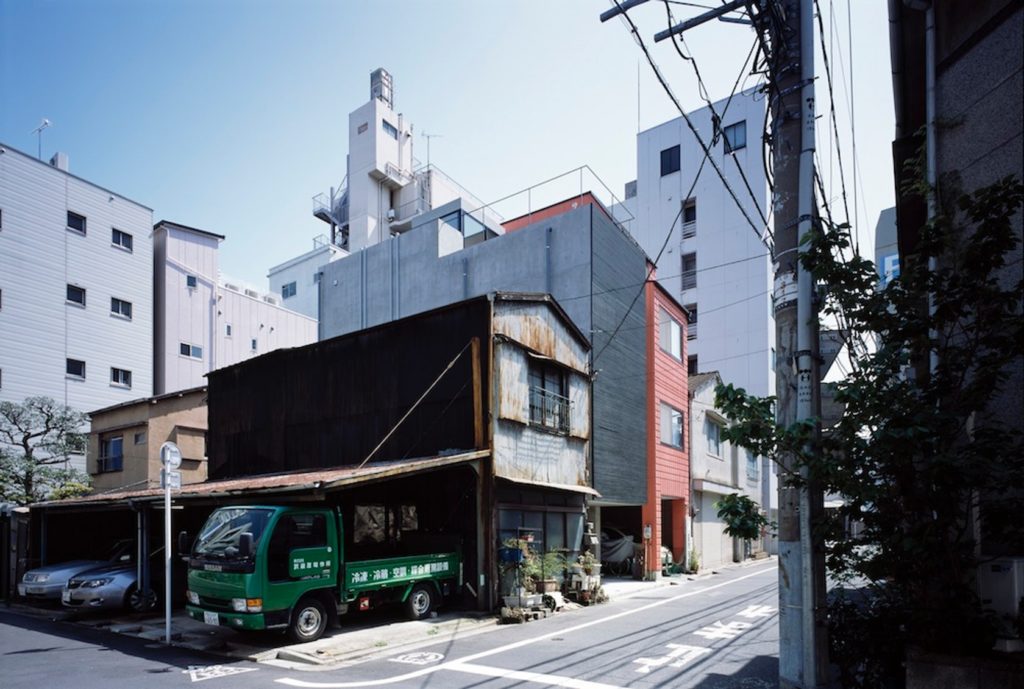
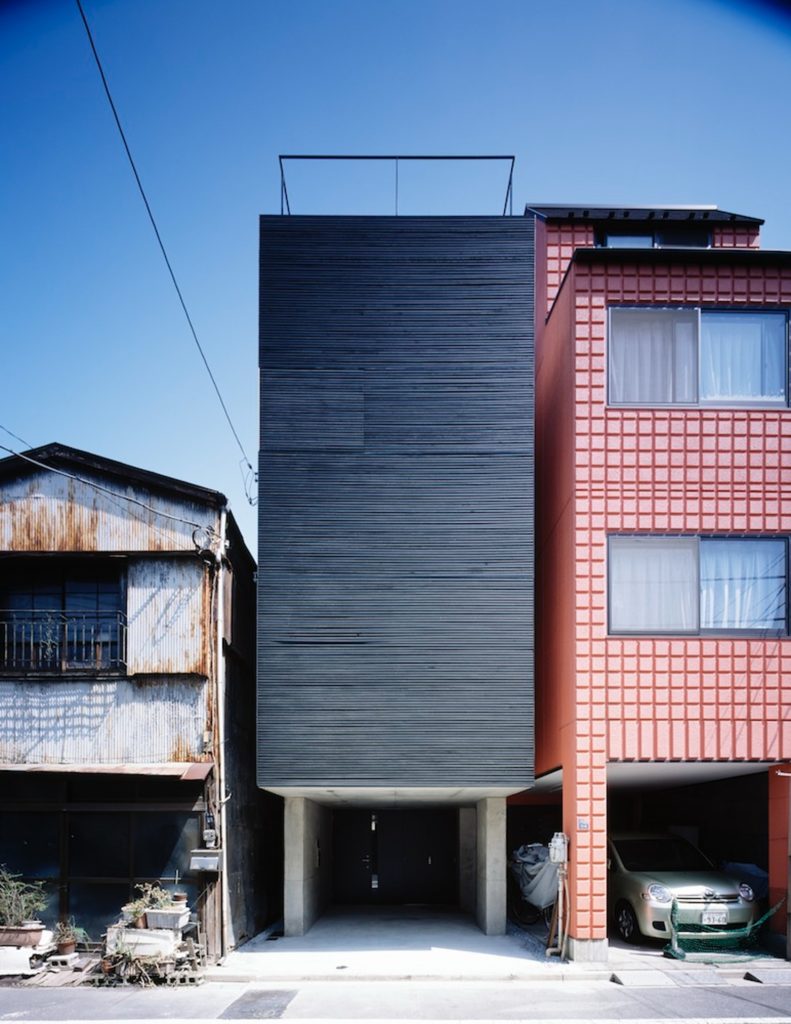
8. Latticed Timber
Lattice House by Apollo Architects & Associates, Tokyo, Japan, 2013
At first glance, Lattice House looks quite dark: another Kubrickian monolith tucked away in a residential Tokyo street. Look more closely, though, and you will see that there are gaps between the slats that comprise the timber screen — just enough space, in fact, for filtered light to penetrate the residence through the windows underneath. This, in addition to a skylight, means that more often than not, this seeming monolith is flooded with natural light. When it comes to black, things are often not as they appear.
Even when painted black, timber has a softer impact than metal, concrete or brick. This was important for this project, which was located on a street that hasn’t seen much construction in recent years. As the authors of Black note, “the blank black façade makes a statement without imposing on the structures around it and signals an inward orientation.”
To see more of the best timber buildings from around the world, check out Phaidon’s book Black: Architecture in Monochrome.
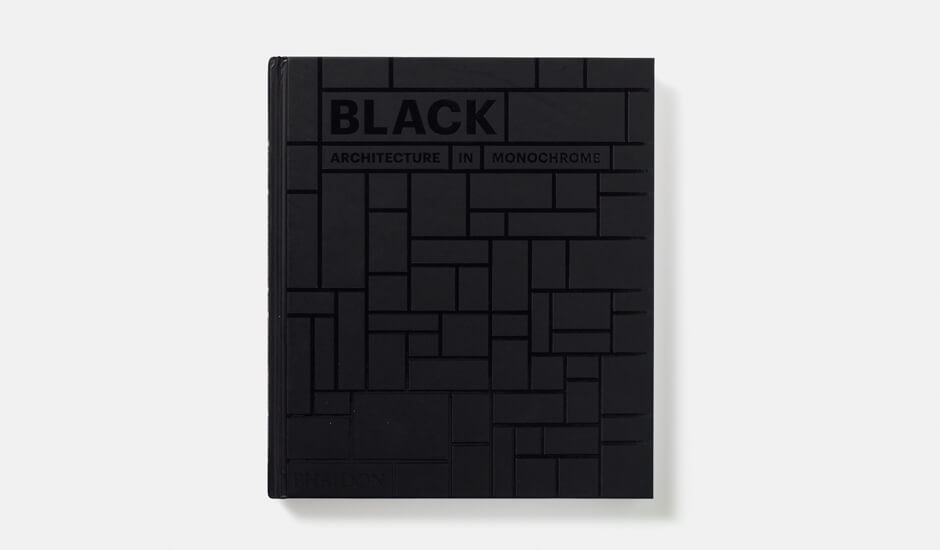
Architects: Showcase your next project through Architizer and sign up for our inspirational newsletter.
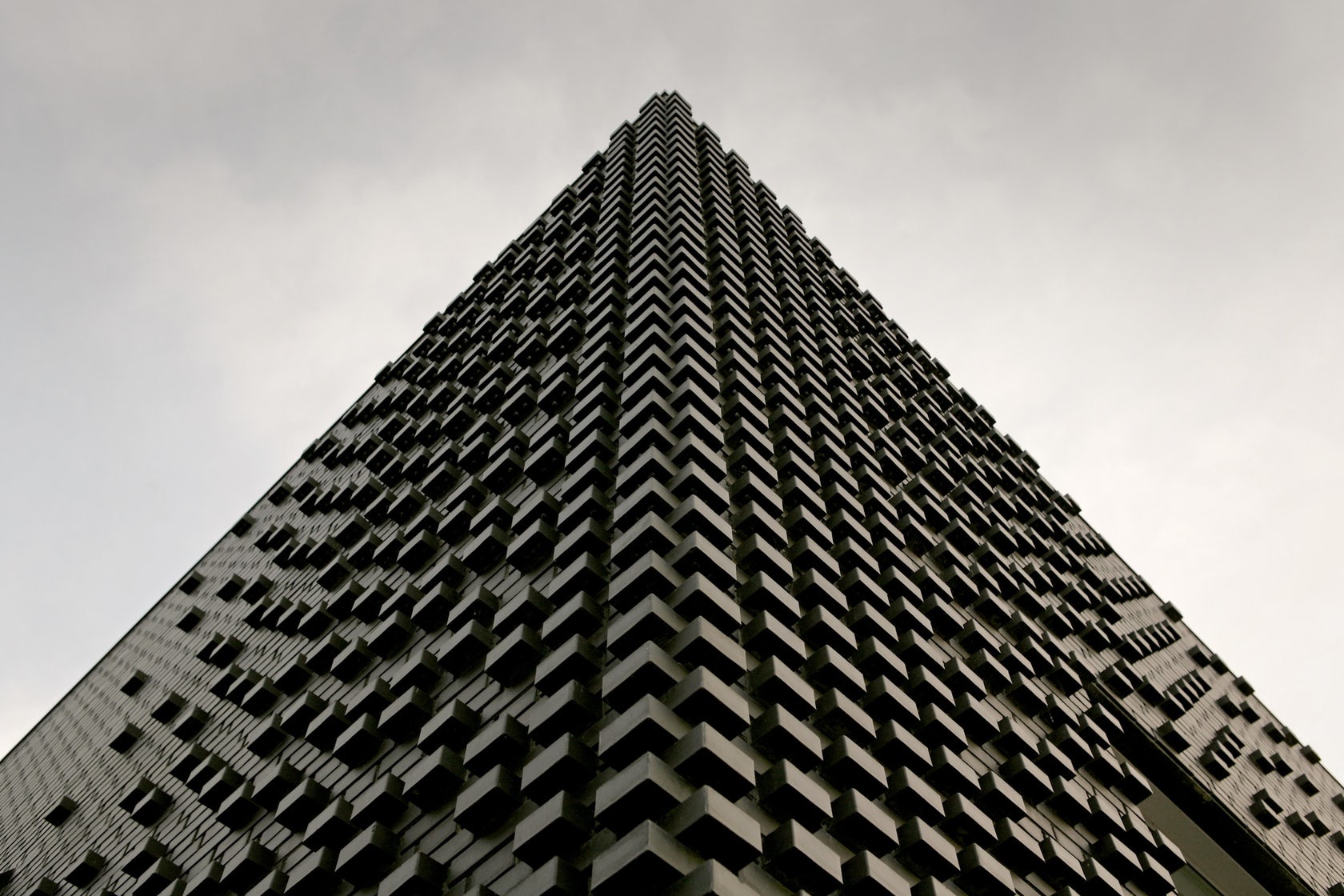
 FAHOUSE
FAHOUSE  House Like Garden (House IJburg)
House Like Garden (House IJburg)  Knut Hamsun Center
Knut Hamsun Center  LATTICE
LATTICE  Prestige Mall
Prestige Mall 
